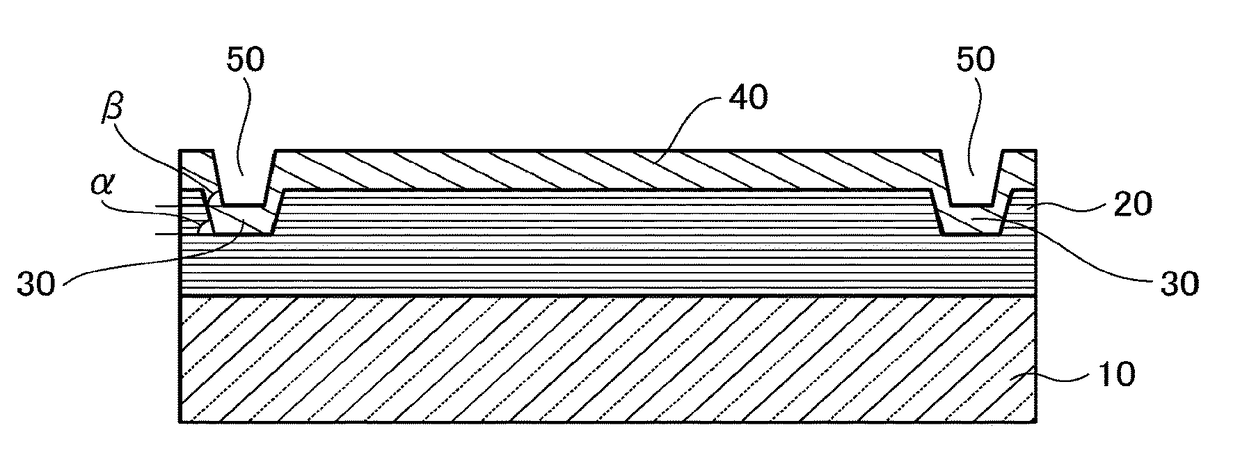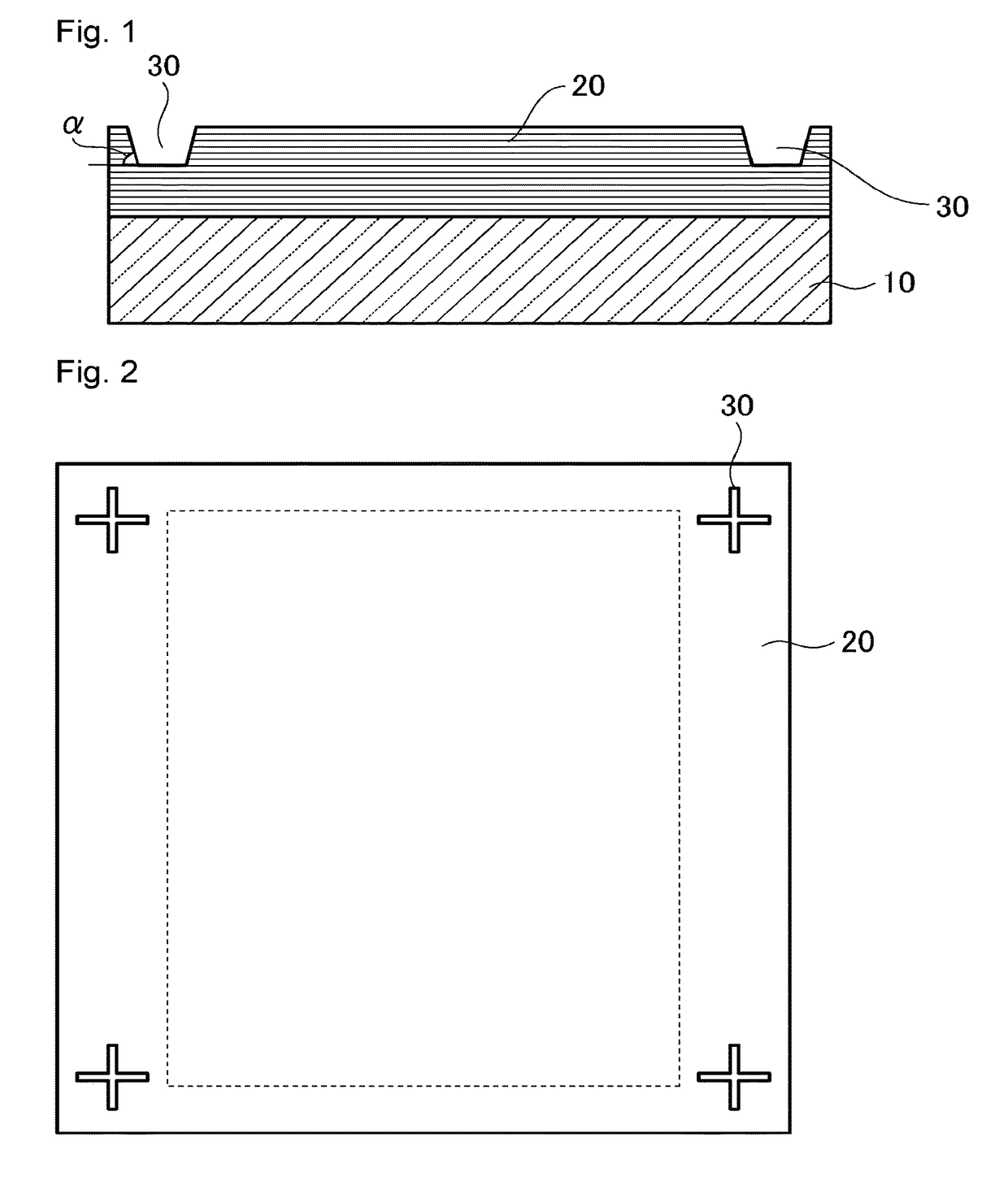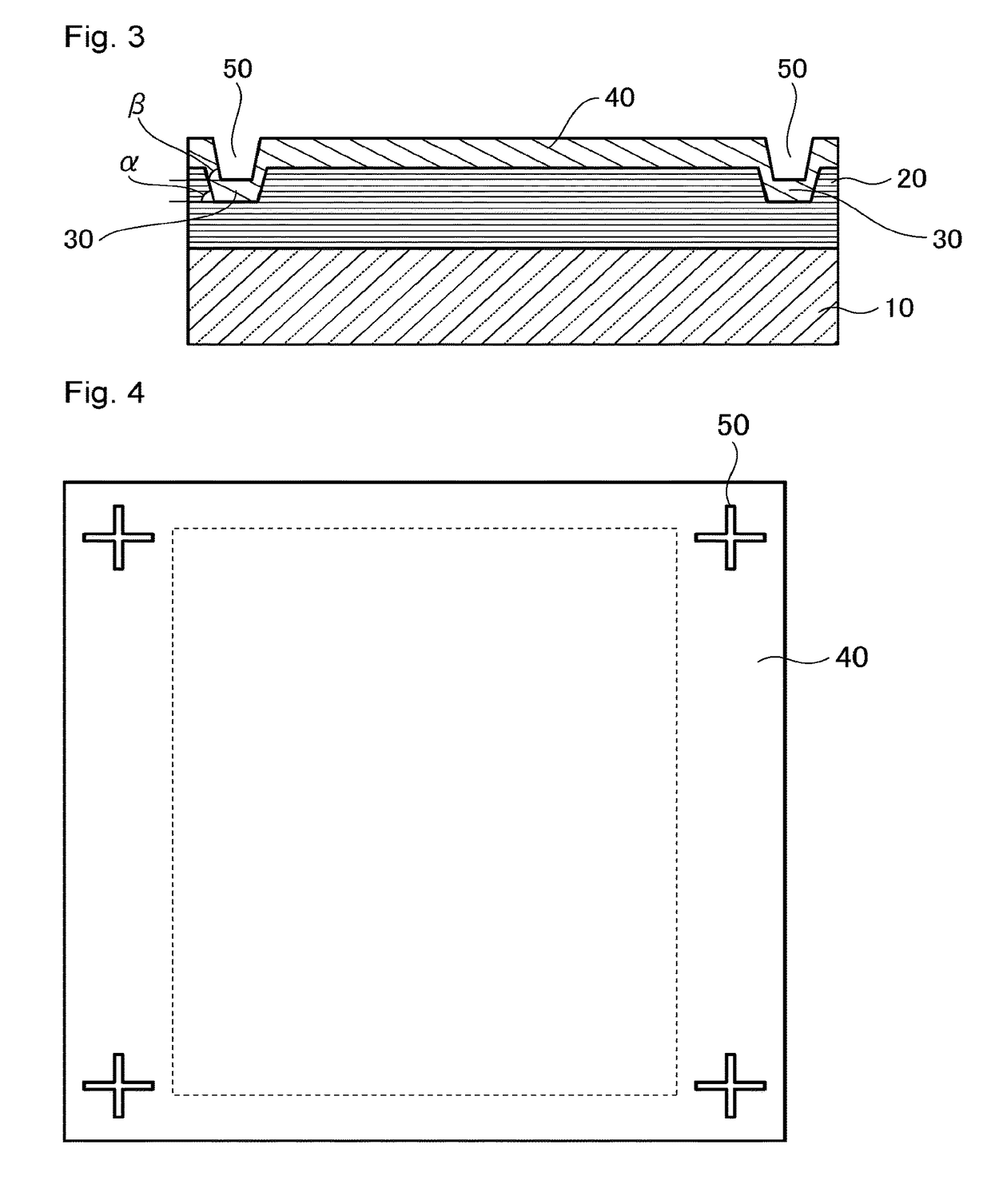Reflective mask blank and process for producing the reflective mask blank
a reflective mask and blank technology, applied in the field of reflective mask blanks, can solve the problems of incorrect transfer of reflective photomask pattern to a wafer, and it is extremely difficult to remove such defect from multi-layer reflective films. achieve good accuracy
- Summary
- Abstract
- Description
- Claims
- Application Information
AI Technical Summary
Benefits of technology
Problems solved by technology
Method used
Image
Examples
example 1
[0140]In this Example, a reflective mask blank as shown in FIGS. 3 and 4 are produced.
[0141]As the substrate for film deposition 10, a SiO2—TiO2 based glass substrate (having outer dimensions of 6 inch, i.e. 152.4 mm square and a thickness of 6.3 mm) is used. The glass substrate has a thermal expansion coefficient of 0.2×10−7 / ° C., a Young's modulus of 67 GPa, a Poisson ratio of 0.17 and a specific rigidity of 3.07×107 m2 / s2. The glass substrate is polished to have a smooth surface with at most 0.15 nm in Rq and have a flatness of at most 100 nm.
[0142]The substrate 10 has a high dielectric coating a sheet resistance of 100 Ω / square (not shown) applied on the back side by depositing a Cr film having a thickness of 100 nm by use of a magnetron sputtering method.
[0143]The Cr film formed by the above-mentioned procedure is used to fix the substrate 10 (having outer dimensions of 6 inch, i.e. 152.4 mm square and a thickness of 6.3 mm) to an ordinary planar electrostatic chuck, and Mo fil...
example 2
[0162]The same procedure as Example 1 is carried out except that the inclination angle α of the concave portion forming each of the fiducial marks 30 formed on the front side of a reflective multilayer film 20 by use of the FIB method is 32°, that the concave portion has a depth of 80 nm, and, that the input power among the conditions in deposition of a TaN layer as the absorber layer is a half (½ P) of the one (P) in Example 1. The inclination angle β of the concave portion forming each of the transferred marks 50 is 63°, and the concave portion has a depth of 80 nm. The difference between the inclination angle β of the concave portion forming each of the transferred marks 50 and the inclination angle α of the concave portion forming each of the corresponding fiducial marks 30 (inclination angle β−inclination angle α) is 31°.
example 3
[0163]The same procedure as Example 1 is carried out except that the inclination angle α of the concave portion forming each of the fiducial marks 30 formed on the front side of a reflective multilayer film by use of the FIB method is 31°, that the concave portion has a depth of 81 nm, and that the input power in the conditions for deposition of a TaN as the absorber layer 40 is ¼ (¼ P) of the one (P) in Example 1. The inclination angle β of the concave portion forming each of the transferred marks 50 is 55°, and the concave portion has a depth of 81 nm. The difference between the inclination angle β of the concave portion forming each of the transferred mark 50 and the inclination angle α of the concave portion forming each of the corresponding fiducial marks 30 (inclination angle β−inclination angle α) is 24°.
PUM
| Property | Measurement | Unit |
|---|---|---|
| thickness | aaaaa | aaaaa |
| inclination angle | aaaaa | aaaaa |
| inclination angle | aaaaa | aaaaa |
Abstract
Description
Claims
Application Information
 Login to View More
Login to View More - R&D
- Intellectual Property
- Life Sciences
- Materials
- Tech Scout
- Unparalleled Data Quality
- Higher Quality Content
- 60% Fewer Hallucinations
Browse by: Latest US Patents, China's latest patents, Technical Efficacy Thesaurus, Application Domain, Technology Topic, Popular Technical Reports.
© 2025 PatSnap. All rights reserved.Legal|Privacy policy|Modern Slavery Act Transparency Statement|Sitemap|About US| Contact US: help@patsnap.com



